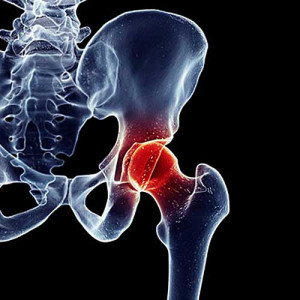Definition – What is Hip Osteoarthritis?
Osteoarthritis (OA) is the most common form of arthritis and is sometimes referred to as degenerative joint disease or “wear and tear”.
This occurs commonly in weight bearing joints such as the knees and hips (Hip Osteoarthritis) but also the base of the thumb. OA is different than rheumatoid arthritis (RA) which represents a disease with multiple system involvement (skins, eyes, heart, etc.) including the joints.
Related Articles:
- Arthritis Joint Pain – Do You Have Osteoarthritis (OA)?
- Osteoarthritis (OA) – Arthritis Treatment Options
- What Causes Back Pain?
Causes
Over time, the cartilage of the hip joint begins to “wear down” which makes the joint space more narrow. Osteoarthritis is a progressive phenomenon. That is, once the joint becomes degenerative, the degeneration will worsen over time. Multiple factors are involved with the onset and severity of hip arthritis including genetics, age, gender, and body habitus. In younger patients, arthritis may be evident after significant trauma and referred to as post-traumatic degenerative arthritis.
Symptoms
Signs and symptoms of osteoarthritis may include the following:
- Pain or aching
- Swelling
- Joint stiffness and decreased flexibility
- Decreased range of motion
- Joint deformity
Diagnosis
The doctor will evaluate your pain initially with a thorough history and physical examination. The next step will usually be to obtain X-ray images of the joint to assess the degree of osteoarthritis. In younger patients, if the reason for hip pain is thought to be soft tissue (anything other than bone), an MRI may also be appropriate. Lab tests are usually not needed to assess for osteoarthritis, but may be ordered to rule out other possibilities such as infection and gout.
Treatment of Osteoarthritis (OA)
The initial step for nonsurgical treatment includes a course of physical therapy as well as medication usually nonsteroidal anti-inflammatory drugs (NSAIDs) such as ibuprofen or acetaminophen. If overweight, weight loss can be very effective. Use of an assistive device such as a cane can also be helpful. If the pain persists, the next step is usually a hip corticosteroid injection also known as a “steroid injection” or “cortisone shot”. This procedure is done in the office with x-ray or ultrasound guidance to avoid sensitive structures such as blood vessels and nerves, and to ensure accurate needle placement into the hip. Other treatment options including orthobiologics therapies such as PRP or stem cell, and ultimately joint replacement (arthroplasty).
Resources
https://www.cdc.gov/arthritis
https://www.arthritis.org/about-arthritis/where-it-hurts/hip-pain


